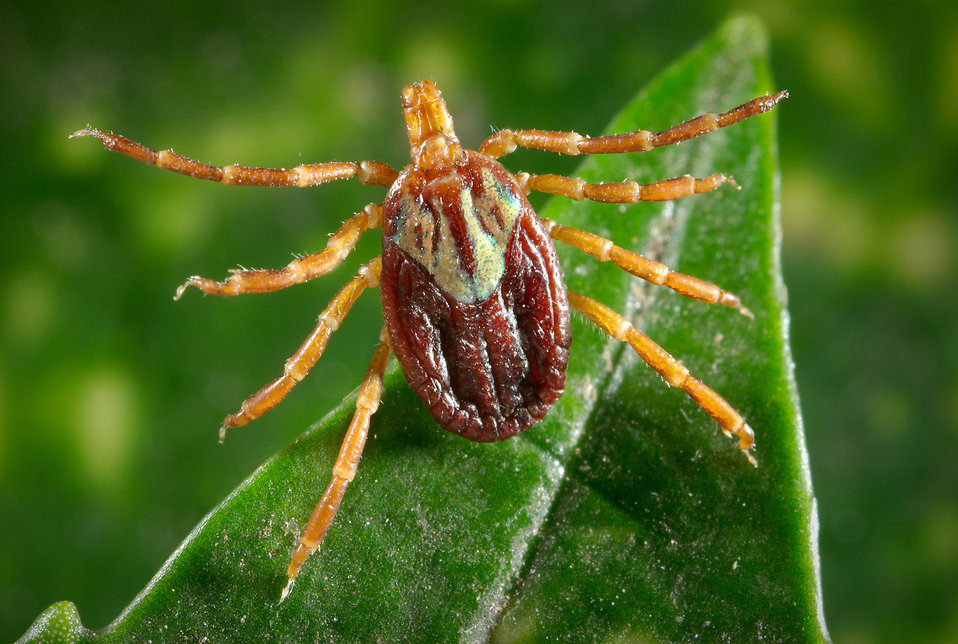This week’s Weekly Report comes from Dr. Maryam Arshad:

A 37 year old male presents with flu like symptoms. He has a subjective fever, body aches, cough, and congestion. He also notes a recent tick bite one week ago and removed the tick by himself. He has no rash.
Clinical question:
Should this patient have Lyme titers drawn and should he be treated with antibiotics?
Lyme disease can be classified into three stages: ‘early’ or ‘localized’, ‘early disseminated’, or ‘late’. The early or localized stage typically occurs a few days to one month after the tick bite and is characterized by an erythema migrans rash. There may be some nonspecific complaints such as malaise, fever, and myalgias. Early disseminated stage occurs weeks to months after the tick bite. Patients may manifest symptoms that are cardiac (AV block), neurologic (meningitis or facial nerve palsy), or musculoskeletal (severe monoarticular arthritis). Late stage lyme disease occurs months to years after the initial tick bite and is most often associated with arthritis or neurologic disease.
Diagnosis of early or localized stage Lyme disease can be made clinically in patients with potential tick exposure who have an erythema migrans rash. In such patients, titers are likely to be negative as it takes several weeks to form an antibody response. Patients with erythema migrans should be empirically treated with oral doxycycline 100 mg BID for 10-21 days. Alternative regimens include amoxicillin 500 mg TID or cefuroxime axetil 500 mg BID. Patients with cardiac or neurologic manifestations may require IV therapy.
The CDC recommends that serologic testing should be performed on patients who have symptoms of early disseminated or late Lyme disease AND that meet the following criteria: a recent history of having resided in or traveled to an area endemic for Lyme disease and a risk factor for exposure to ticks. When serologic testing is indicated, a two-tier system is recommended: ELISA testing followed by a Western blot. It is possible for patients who were infected with Lyme to test negative if they received antibiotics early. Also, if testing is performed early, results may be falsely negative as the antibody response typically takes a few weeks to develop, so if clinical suspicion is high convalescent serum testing is recommended.
Routine use of antibiotic prophylaxis or serologic testing after a tick bite in a patient who is asymptomatic is not recommended. However, if all of the following criteria are met, a single dose of 200 mg doxycycline may be offered for prophylaxis against Lyme: 1) the tick can be identified as Ixodes scapularis with an estimated time of attachment >36 hours based on degree on engorgement or exposure time; 2) prophylaxis can be administered within 72 hours of tick removal; 3) local rates of infection of these ticks with Borrelia burgdorferi is >20%; 4) doxycycline is not contraindicated.
For more information: http://www.cdc.gov/lyme/healthcare/index.html
References:
- Wormser et al. The Clinical Assessment, Treatment, and Prevention of Lyme Disease, Human Granulocytic Anaplasmosis, and Babesiosis: Clinical Practice Guidelines by the Infectious Disease Society of America. Clin Infect Dis. (2006) 43 (9): 1089-1134.
- Centers for Disease Control and Prevention (CDC). Tickborne Diseases of the United States: A Reference Manual for Health Care Providers, Third Edition (2015).
- Centers for Disease Control and Prevention (CDC). Recommendations for test performance and interpretation from the Second National Conference on Serologic Diagnosis of Lyme Disease. MMWR Morb Mortal Wkly Rep 1995; 44:590.
- Shapiro ED, Gerber MA, Holabird NB, et al. A controlled trial of antimicrobial prophylaxis for Lyme disease after deer-tick bites. N Engl J Med 1992; 327:1769.
- Steere AC. Diagnosis and treatment of Lyme arthritis. Med Clin North Am 1997; 81:179.
- Nadelman et al. Prophylaxis with single-dose doxycycline for the prevention of Lyme disease after an Ixodes scapularis tick bite. N Engl J Med. 2001 Jul 12;345(2):79-84.
